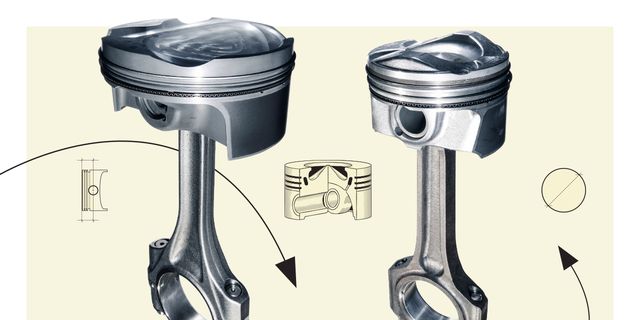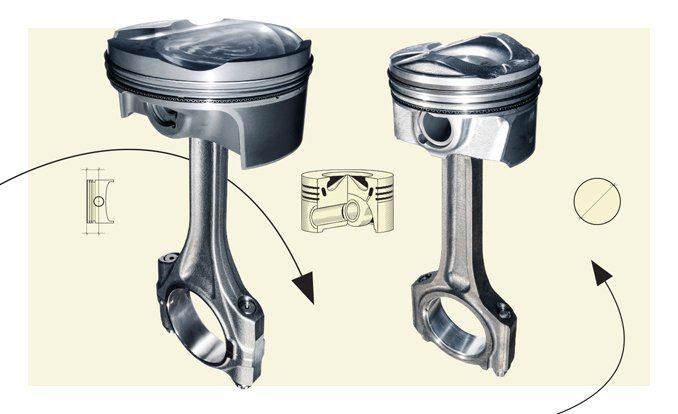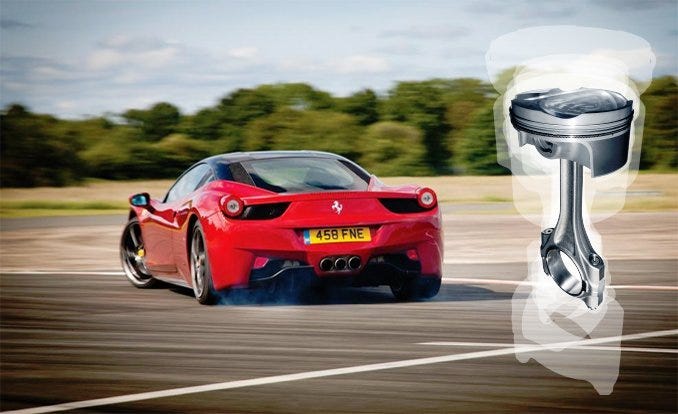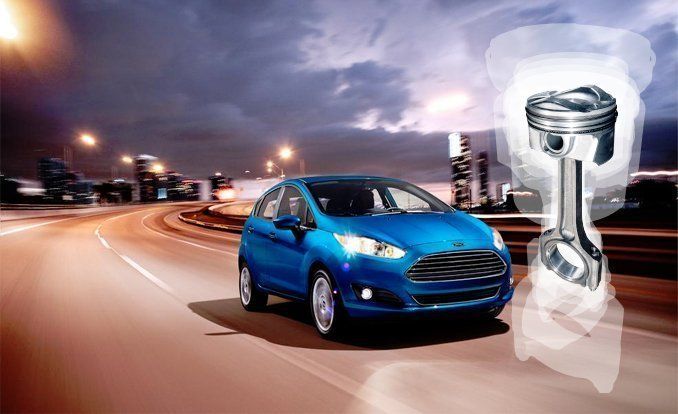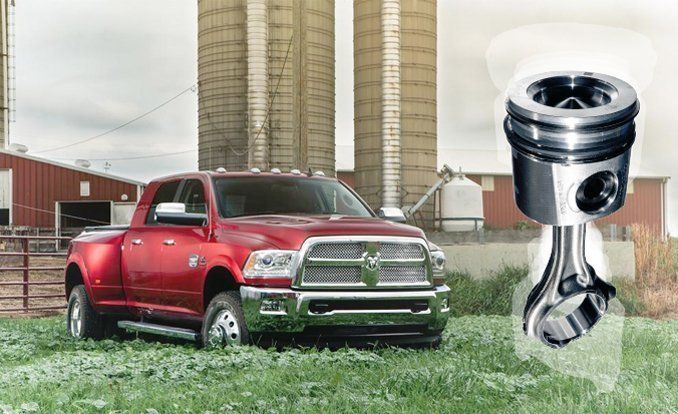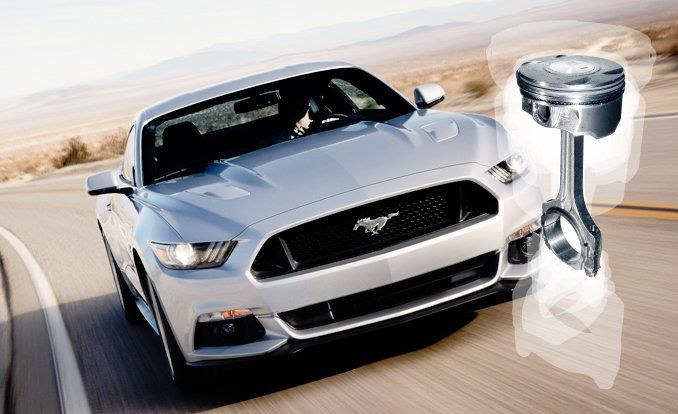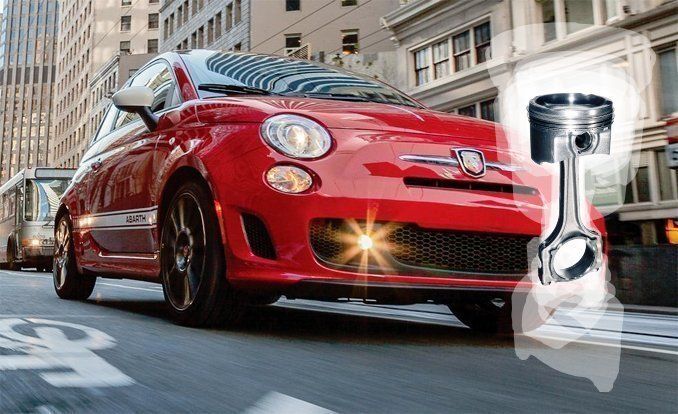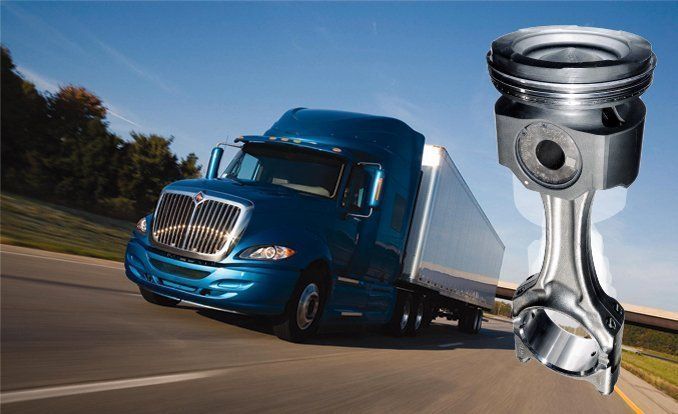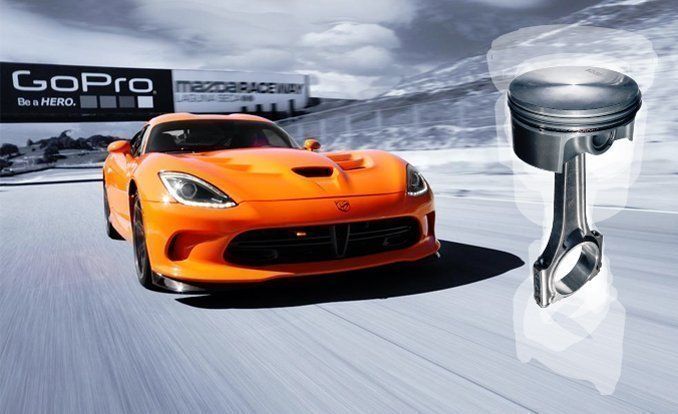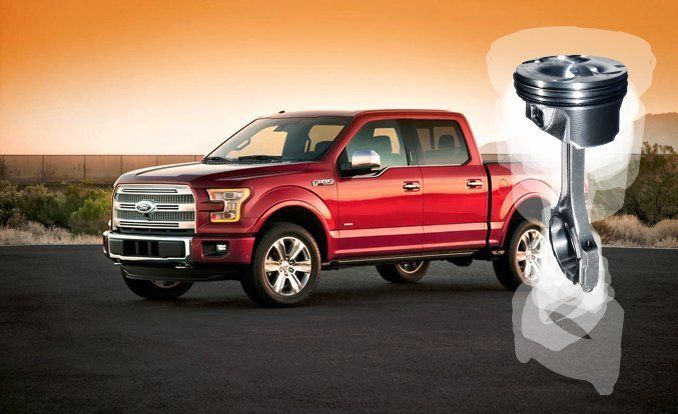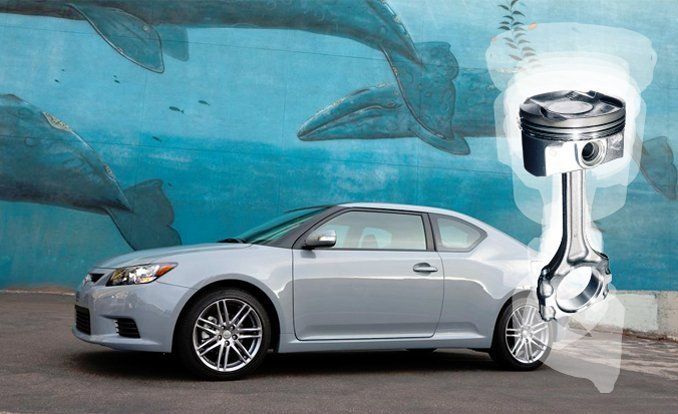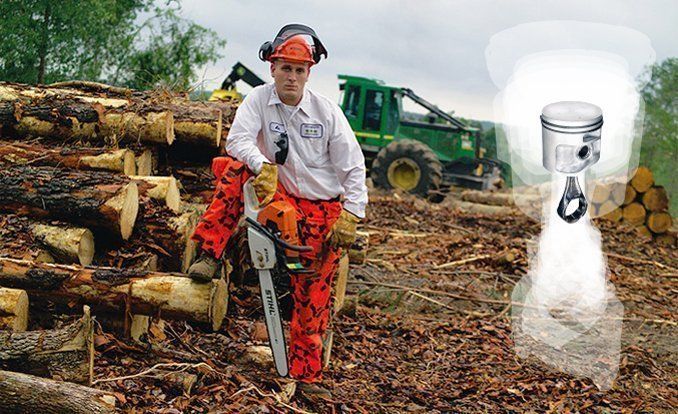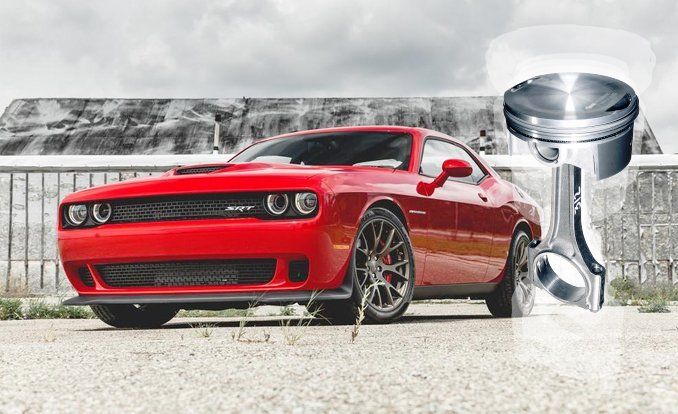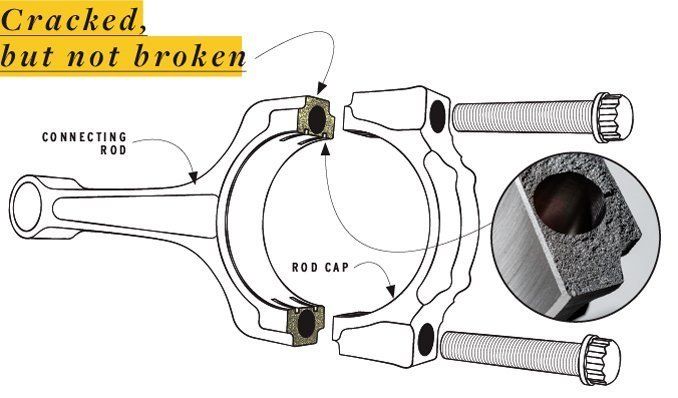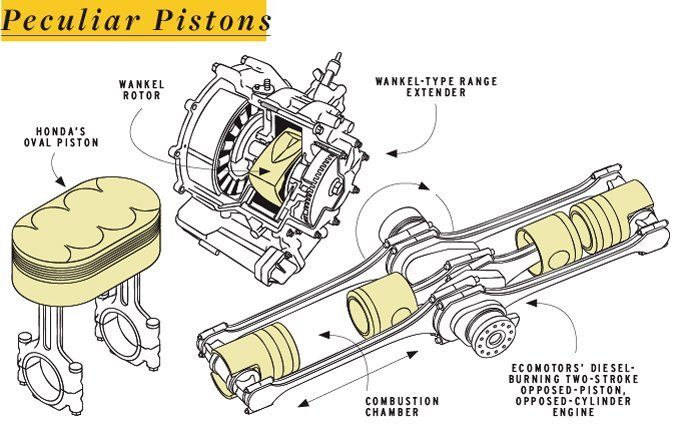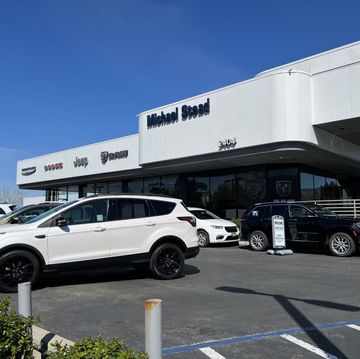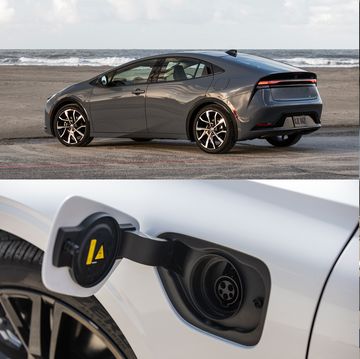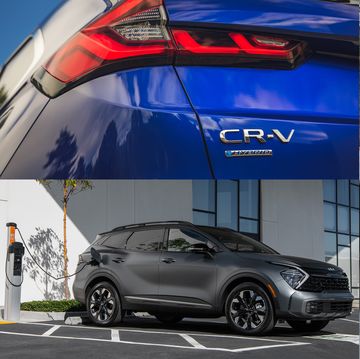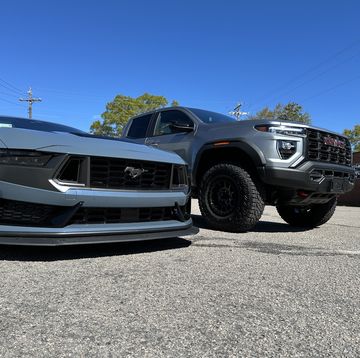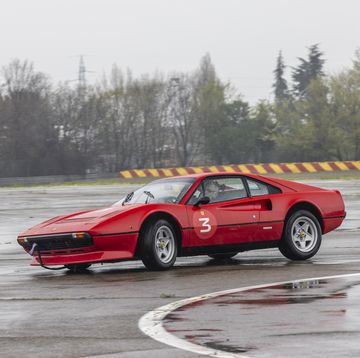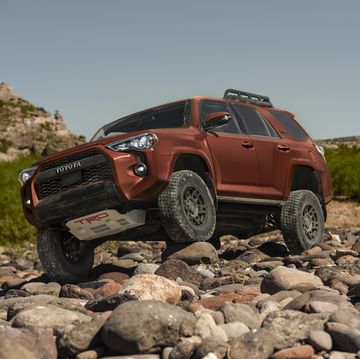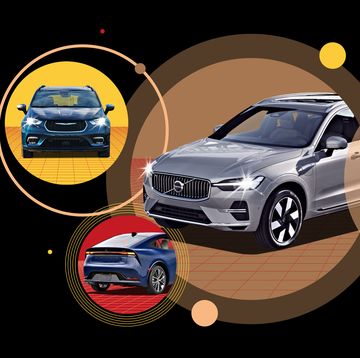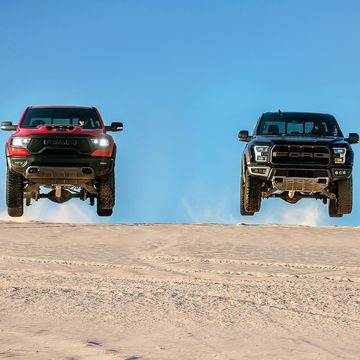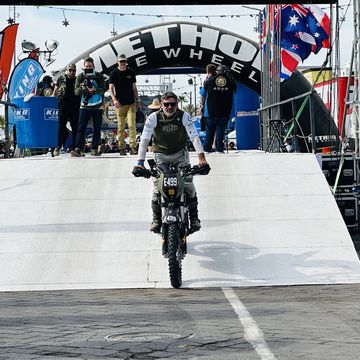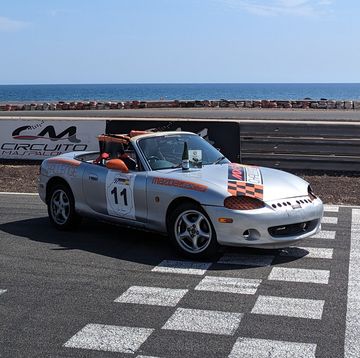The slugs of aluminum inside your engine live in a fiery hell. At full throttle and 6000 rpm, a piston in a gasoline engine is subjected to nearly 10 tons of force every 0.02 second as repeated explosions heat the metal to more than 600 degrees Fahrenheit.
These days, that cylindrical Hades is hotter and more intense than ever, and it’s only likely to get worse for pistons. As automakers chase higher efficiency, piston manufacturers are preparing for a future in which the most-potent naturally aspirated gasoline engines produce 175 horsepower per liter, up from 130 today. With turbocharging and increased outputs come even tougher conditions. In the past decade, piston operating temperatures have climbed 120 degrees, while peak cylinder pressures have swollen from 1500 psi to 2200.
A piston tells a story about the engine in which it resides. The crown can reveal the bore, the number of valves, and whether or not the fuel is directly injected into the cylinder. Yet a piston’s design and technology can also say a lot about the wider trends and challenges facing the auto industry. To coin a maxim: As the automobile goes, so goes the engine; and as the engine goes, so goes the piston. In the quest for improved fuel economy and lower emissions, automakers are asking for lighter, lower-friction pistons with the stamina to endure tougher operating conditions. It is these three concerns—durability, friction, and mass—that consume the piston suppliers’ workdays.
In many ways, gasoline-engine development is following the path laid out by diesels 15 years ago. To compensate for the 50-percent increase in peak cylinder pressures, some aluminum pistons now have an iron or steel insert to support the top ring. The hottest gasoline engines will soon require a cooling gallery, or an enclosed channel on the underside of the crown that’s more efficient at removing heat than today’s method of simply spraying the piston’s underside with oil. The squirters shoot oil into a small opening on the bottom of the piston that feeds the gallery. The seemingly simple technology isn’t easy to manufacture, though. Creating a hollow passage means casting the piston as two pieces and joining them via friction or laser welding.
Pistons account for at least 60 percent of the engine’s friction, and improvements here have a direct impact on fuel consumption. Friction-reducing, graphite-impregnated resin patches screen-printed onto the skirt are now nearly universal. Piston supplier Federal-Mogul is experimenting with a tapered face on the oil ring that allows a reduction in the ring tension without increasing oil consumption. Lower ring friction can unlock as much as 0.15 horsepower per cylinder.
Automakers are also hungry for new friction-reducing finishes between parts that rub or rotate against each other. The hard and slippery diamond-like coating, or DLC, holds promise for cylinder liners, piston rings, and wrist pins, where it can eliminate the need for bearings between the pin and connecting rod. But it’s expensive and has few applications in today’s cars.
“The [manufacturers] are discussing DLC often, but whether or not they will make it into production cars is a question mark,” says Joachim Wagenblast, senior director of product development at Mahle, a German auto-parts supplier.
Increasingly sophisticated computer modeling and more-precise manufacturing methods also enable more-complex shapes. In addition to the bowls, domes, and valve indents needed for clearance and to achieve a particular compression ratio, asymmetric skirts feature a smaller, stiffer area on the thrust side of the piston to reduce friction and stress concentrations. Flip a piston over and you’ll see tapered walls scarcely more than 0.1 inch thick. Thinner walls require tighter control on tolerances that are already measured in microns, or thousandths of a millimeter.
Thinner walls also demand a better understanding of the thermal expansion of an object that sometimes has to warm from below freezing to several hundred degrees in a matter of seconds. The metal in your engine doesn’t expand uniformly as it heats up, so optimizing tolerances requires the design experience and precise machining capabilities to create slight eccentricities in the parts.
“Nothing we make is straight or round deliberately,” says Keri Westbrooke, director of engineering and technology at Federal-Mogul. “We’re always building in some compensation.”
Diesel-engine pistons are undergoing their own evolution as peak cylinder pressures rise toward 3600 psi. Mahle and Federal-Mogul are predicting a shift from cast aluminum to forged steel pistons. Steel is denser than aluminum but three times stronger, leading to a piston that is more resilient to higher pressures and temperatures with no increase in weight.
Steel enables a notable change in geometry by shortening the piston’s compression height, defined as the distance from the center of the wrist pin to the top of the crown. This area accounts for 80 percent of the piston’s weight, so shorter generally means lighter. Critically, a lower compression height doesn’t just shrink the pistons. It also allows for a shorter and lighter engine block as the deck height is reduced.
Mahle manufactures steel pistons for leading-edge turbo-diesel applications, such as the four-time Le Mans–winning Audi R18 TDI and Mazda’s LMP2 Skyactiv-D engine. The company will begin shipping its first steel pistons for a light-duty production diesel engine, a Renault 1.5-liter four-cylinder, later this year.
The internal-combustion engine’s lasting relevance is due to the continuous evolution of its components. Pistons are not sexy. They’re not as modish as a lithium-ion battery, as complex as a dual-clutch transmission, or as interesting as a torque-vectoring differential. Yet after more than a century of automotive progress, reciprocating pistons continue to produce most of the power that moves us.
1. Ferrari F136
Applications: Ferrari 458 Italia (shown), 458 Spider
Engine Type: DOHC V-8
Displacement: 274 cu in, 4497 cc
Specific Output: 125.0 hp/l
Max engine speed: 9000 rpm
Bore: 3.70 in
Weight: 2.1 lb
2. Ford Fox
Applications: Ford Fiesta (shown), Focus
Engine Type: turbocharged DOHC inline-three
Displacement: 61 cu in, 999 cc
Specific Output: 123.1 hp/l
Max engine speed: 6500 rpm
Bore: 2.83 in
Weight: 1.5 lb
3. Cummins ISB 6.7
Applications: Ram Heavy Duty (shown)
Engine Type: turbocharged pushrod diesel inline-six
Displacement: 408 cu in, 6690 cc
Specific Output: 55.3 hp/l
Max engine speed: 3200 rpm
Bore: 4.21 in
Weight: 8.9 lb
4. Ford Coyote
Applications: Ford F-150, Mustang (shown)
Engine Type: DOHC V-8
Displacement: 302 cu in, 4951 cc
Specific Output: up to 84.8 hp/l
Max engine speed: 7000 rpm
Bore: 3.63 in
Weight: 2.4 lb
5. Fiat Fire 1.4L Turbo
Applications: Dodge Dart; Fiat 500 Abarth (shown), 500L, 500 Turbo
Engine Type: turbocharged SOHC inline-four
Displacement: 83 cu in, 1368 cc
Specific Output: up to 117.0 hp/l
Max engine speed: 6500 rpm
Bore: 2.83 in
Weight: 1.5 lb
6. Cummins ISX15
Applications: heavy-duty trucks (International Prostar shown)
Engine Type: turbocharged SOHC diesel inline-six
Displacement: 912 cu in, 14,948 cc
Specific Output: up to 40.1 hp/l
Max engine speed: 2000 rpm
Bore: 5.39 in
Weight: 26.4 lb
7. Chrysler LA-Series Magnum V-10
Applications: Dodge Viper (shown)
Engine Type: pushrod V-10
Displacement: 512 cu in, 8382 cc
Specific Output: 76.4 hp/l
Max engine speed: 6400 rpm
Bore: 4.06 in
Weight: 2.8 lb
8. Ford EcoBoost 3.5L
Applications: Ford Expedition, Explorer Sport, F-150 (shown), Taurus SHO, Transit; Lincoln MKS, MKT, Navigator
Engine Type: twin-turbocharged DOHC V-6
Displacement: 213 cu in, 3496 cc
Specific Output: up to 105.8 hp/l
Max engine speed: 6500 rpm
Bore: 3.64 in
Weight: 2.6 lb
9. Toyota 2AR-FE
Applications: Scion tC (shown); Toyota Camry, RAV4
Engine Type: DOHC inline-four
Displacement: 152 cu in, 2494 cc
Specific Output: up to 72.2 hp/l
Max engine speed: 6500 rpm
Bore: 3.54 in
Weight: 2.5 lb
10. Stihl MS441 Chain Saw
Applications: MS441 C-M Magnum chain saw (shown), MS441 C-MQ Magnum chain saw
Engine Type: two-stroke single-cylinder
Displacement: 4 cu in, 71 cc
Specific Output: 79.7 hp/l
Max engine speed: 13,500 rpm
Bore: 1.97 in
Weight: 0.4 lb
11. Chrysler Hellcat 6.2L
Applications: Dodge Challenger SRT Hellcat
Engine Type: supercharged pushrod V-8
Displacement: 376 cu in, 6166 cc
Specific Output: 114.7 hp/l
Max engine speed: 6200 rpm
Bore: 4.09 in
Weight: 3.0 lb
As the workload for pistons increases, so do the demands on connecting rods. Higher combustion pressures translate to greater stresses on the sticks linking the pistons to the crank. With the rare exception of exotic titanium pieces, connecting rods are typically either made from powdered steel, compressed and heated in a mold, or forged from steel stock for higher-performance applications. The major technological shift is cracked big-end caps for both powdered-metal and forged connecting rods. Previously the rod and the crank-pin end cap were manufactured as separate pieces. Rods with cracked caps come out of the mold as a single, box-wrench-shaped piece. The crank-pin end is etched, then snapped in two with a press. The resulting irregular surface improves the alignment; yields a more secure cap-to-rod connection; and allows for a more slender, lighter connecting-rod assembly.
Nonmetallic Pistons: Ceramics and composites offer the allure of lower thermal expansion, lighter weight, and higher strength and stiffness compared with aluminum. In the 1980s, Mercedes-Benz used a German government grant to create a 190E engine with carbon-composite pistons that ran for 15,000 miles without issue. While the technology is sound, manufacturing was the limiting factor. A 1990 NASA study found that machining a single piston from a carbon-carbon billet cost $2000. The alternative was a time-consuming hand lay-up process.
Wankel Rotors: Okay, okay, we know it’s not a reciprocating piston, but the cast-iron triangular rotor is the Wankel engine’s piston analogue because it converts combustion energy into torque. With no new Mazda RX on the horizon, our only hope for a rotary revival appears to be Audi, which teased us with a Wankel-type range extender in its 2010 Audi A1 e-tron plug-in hybrid concept.
Oval Pistons: During a time when two-stroke motorcycle engines were the norm, Honda brought a four-stroke to the World Motorcycle Grand Prix in 1979. It stands as one of history’s strangest engines. Honda’s NR500 GP bike was powered by a V-4 engine with a 100-degree vee angle, oval cylinders topped by eight valves each, and two connecting rods per piston. Sealing the oval pistons proved difficult (Soichiro Honda’s original business was supplying piston rings to Toyota), but that was among the least of the team’s worries. The bikes regularly retired from World GP races and occasionally failed to qualify. Within three years, Honda reverted to a traditional two-stroke race engine.
Opposed-Piston Engines: EcoMotors’ diesel-burning two-stroke opposed-piston, opposed-cylinder (OPOC) engine claims an efficiency improvement of as much as 15 percent over a conventional compression-ignition engine. By placing the combustion chamber between two pistons, the company has eliminated the cylinder heads and valvetrain, which are sources of significant heat loss and friction. An OPOC engine with fewer parts should also be cheaper and lighter, if it doesn’t end up on the shelf with the fantastical Fish Carburetor.

Eric Tingwall holds degrees in mechanical engineering and journalism, a combination he pursued with the dream of working at Car and Driver. While living his dream, he has cut car parts in half, driven into a stationary dummy car at 50 mph, lapped Virginia International Raceway in the hottest performance cars, and explained the physics behind the wacky, waving, inflatable, flailing-arm tube man.
